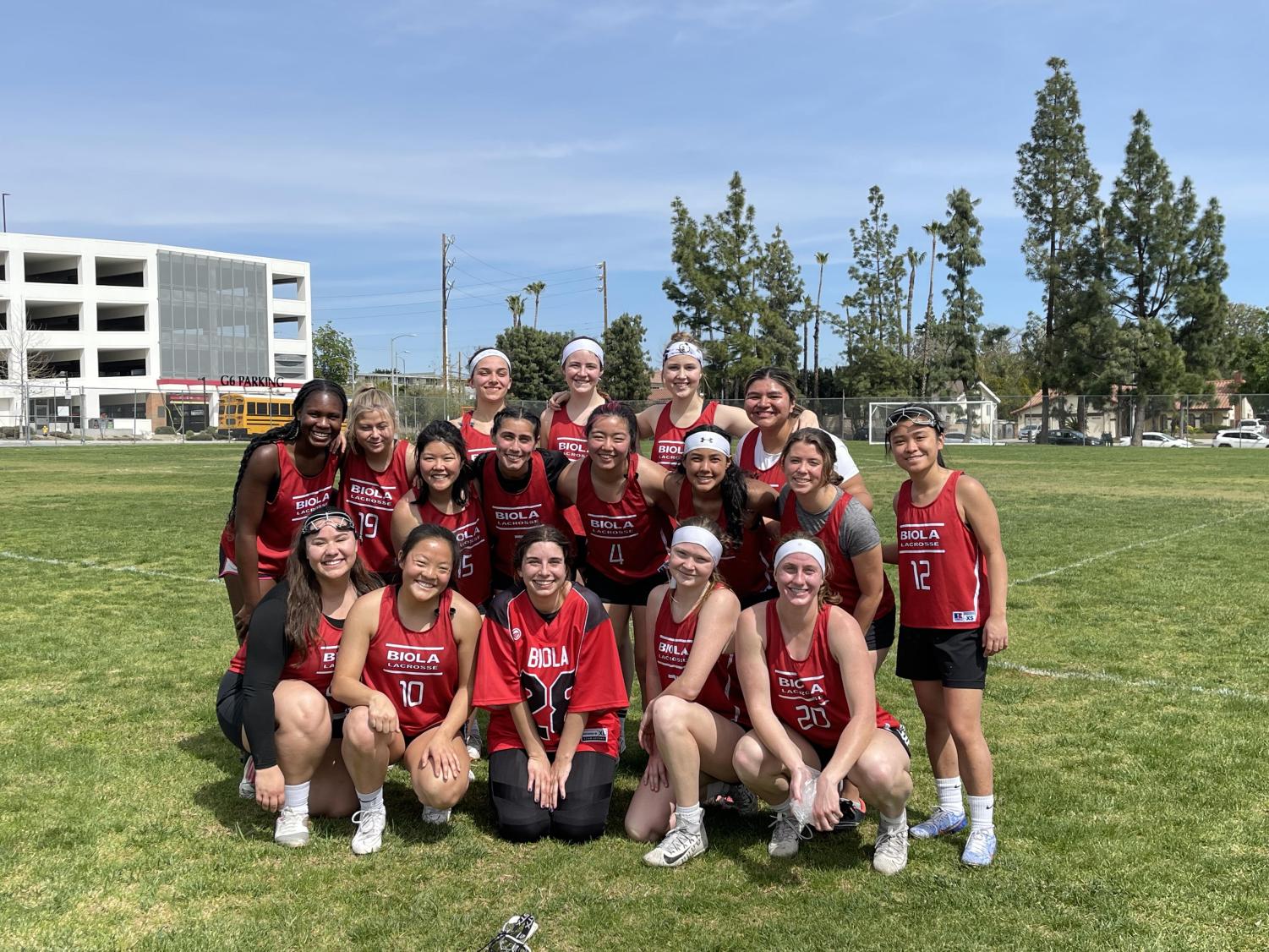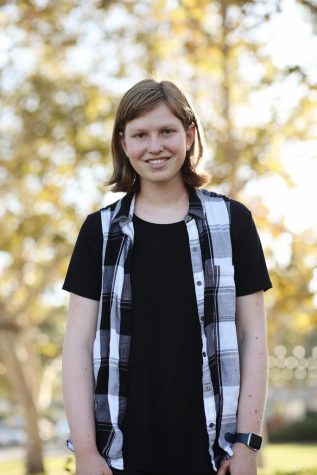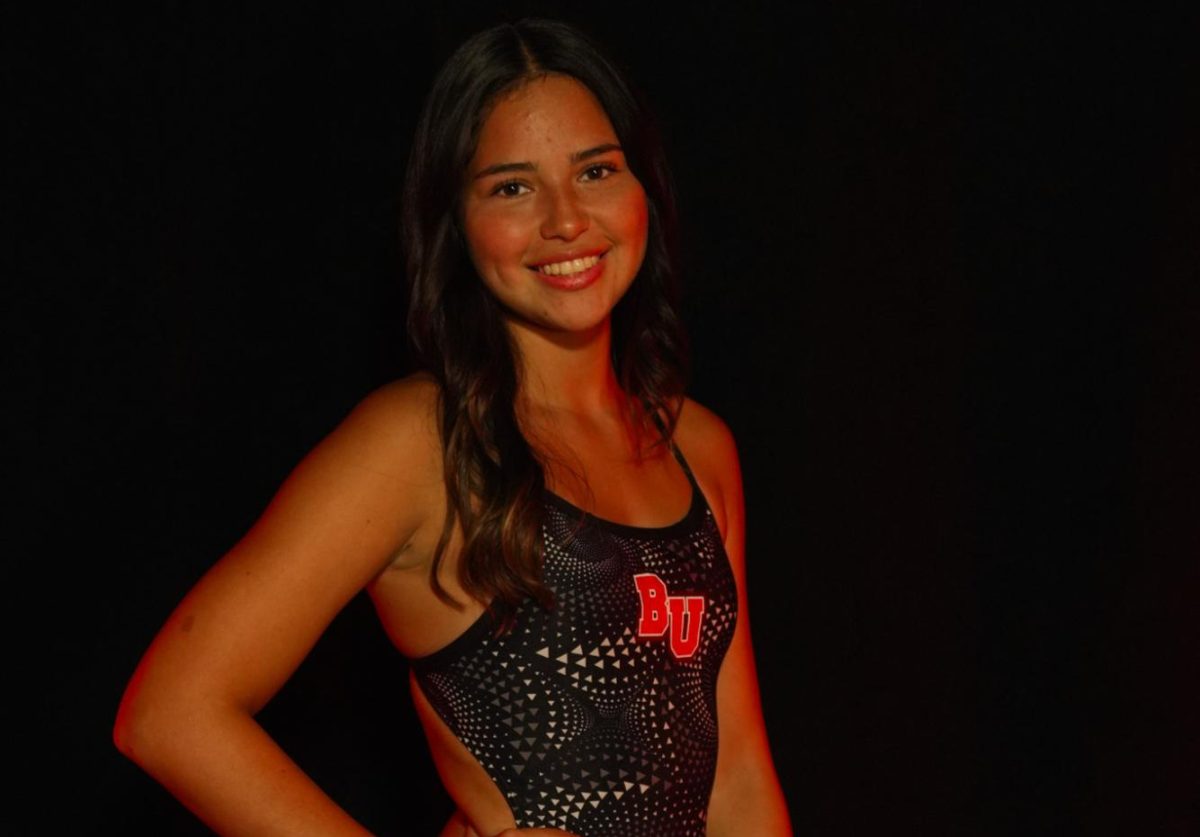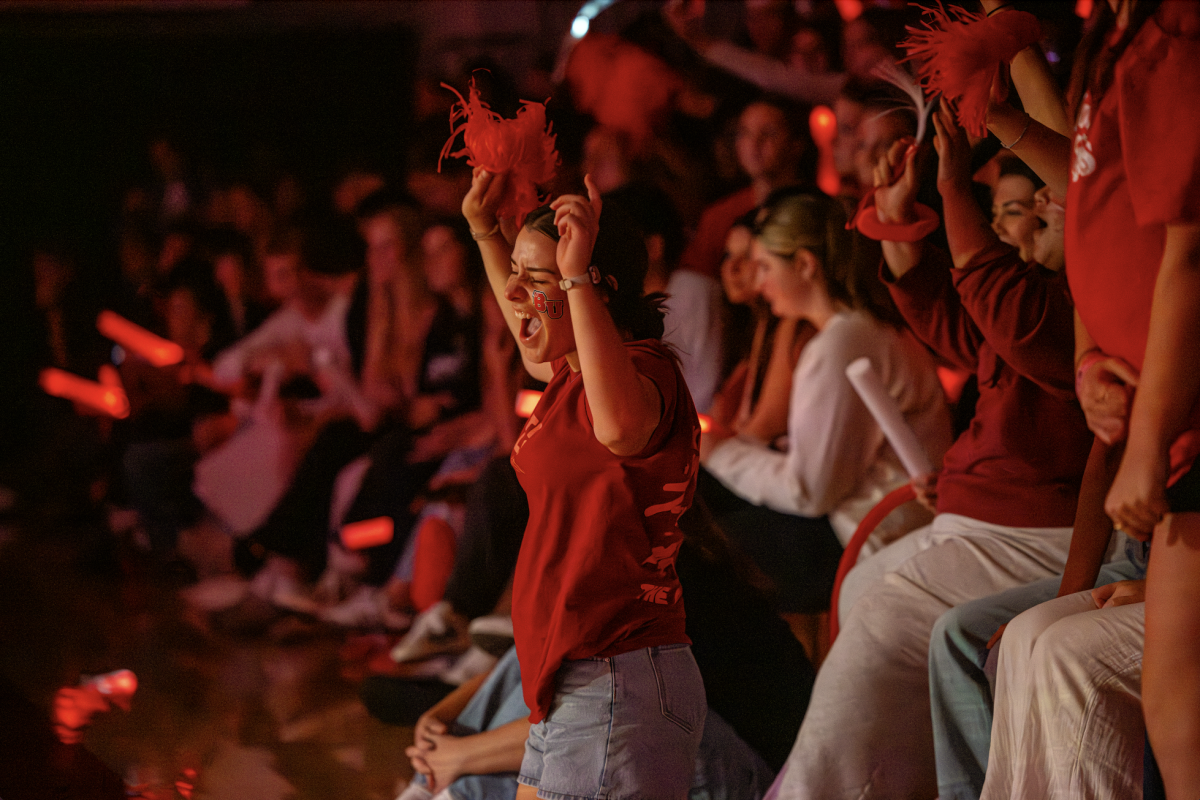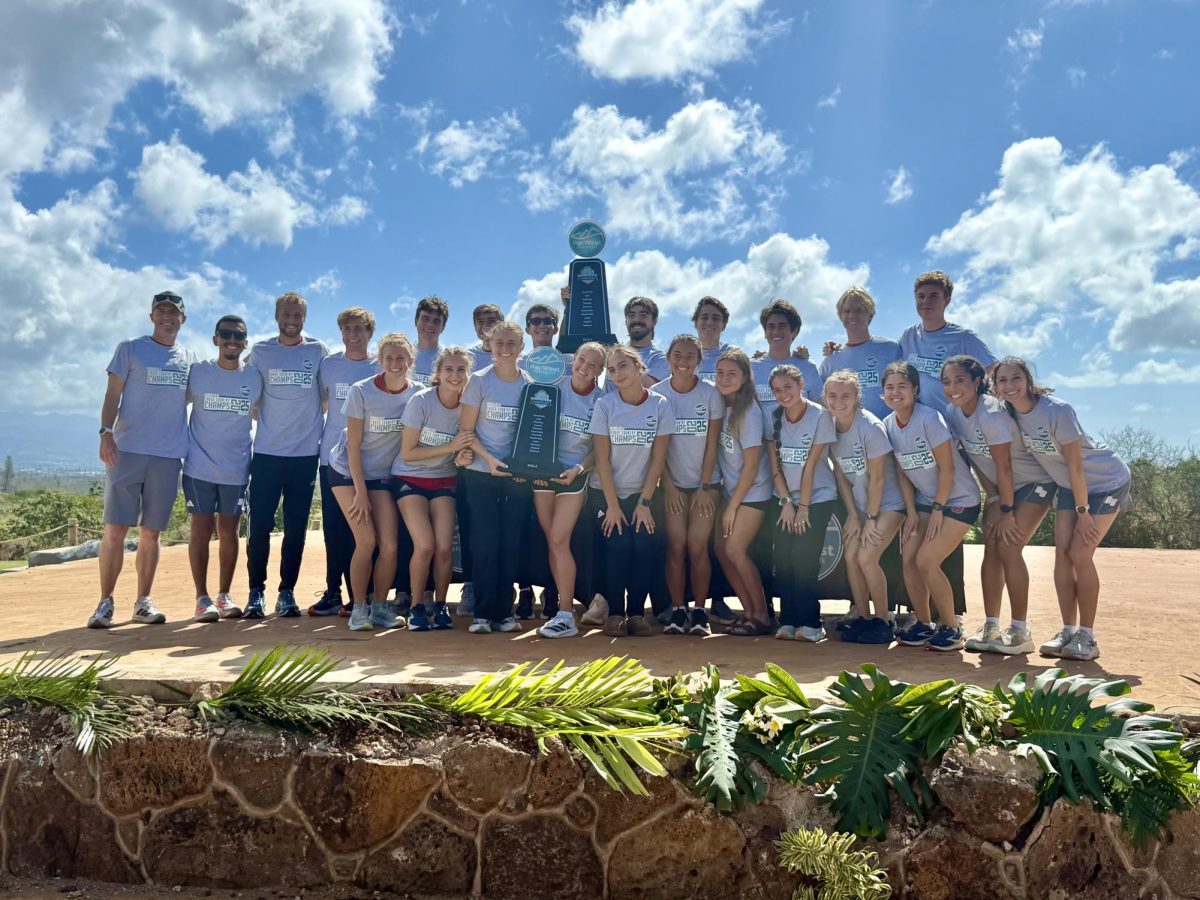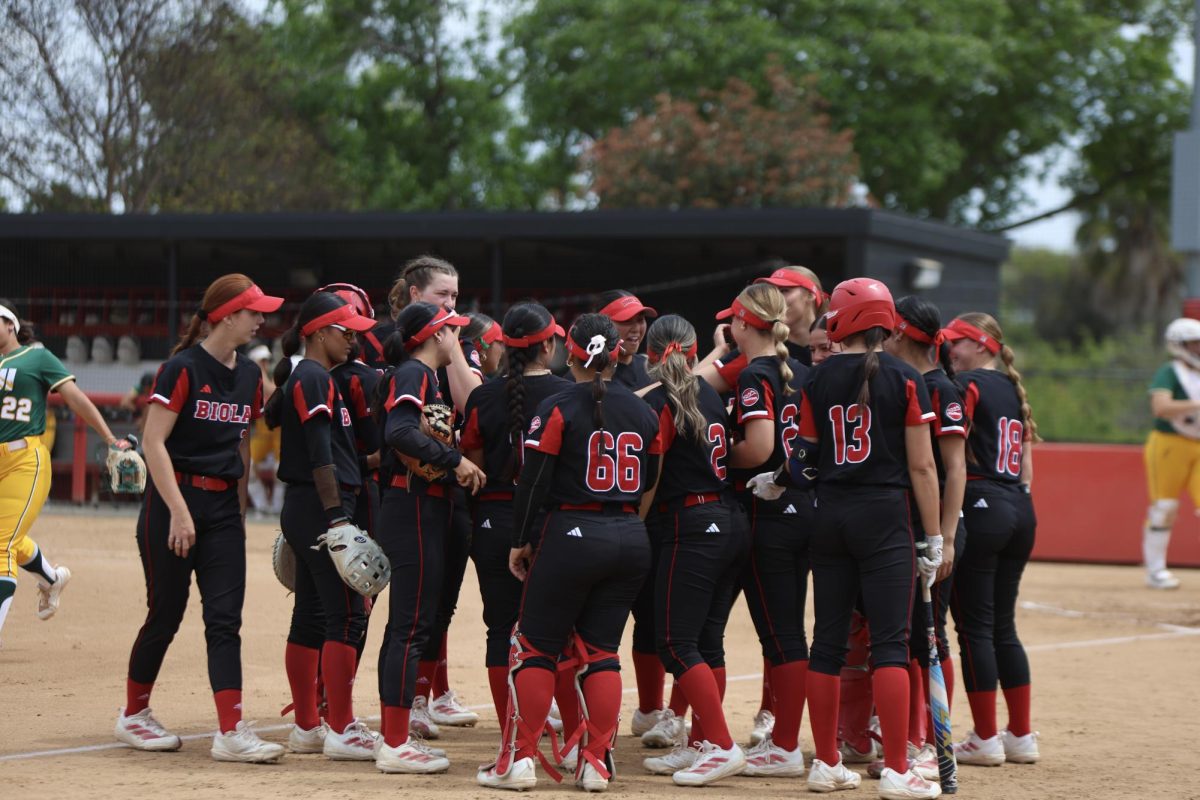On cool autumn evenings during the fall 2022 semester, a lacrosse team without uniforms would walk onto a field to practice without a coach. These Biola women’s lacrosse players trained on Al Barbour Field twice a week during the fall preseason, running their own practices under the guidance of senior health sciences major Mariah Peña, the lacrosse club president and goalie. The team spent a chunk of the time huddled around a phone looking up drills on Google because many of the players joining this DIY venture had never before picked up a lacrosse stick.
This unorthodox approach netted a string of victories for the low profile club, made up of 20 players who practiced for months in black-and-white shirts emblazoned with “Biola Alumni,” passed down from last year’s club season. During the Western Women’s Lacrosse League spring 2023 season, the no-cut program, with little training and no coach, held its own against state schools and community colleges in the Division II Central Conference.
The Eagles trounced the Bruins in January at their first home game in their new red “Biola Lacrosse” mesh sleeveless jerseys, defeating the UCLA B team 9-7. The club struggled in February, falling to the Cal Poly Mustangs’ B team and Santa Barbara City College Vaqueros, but came back in March with a vengeance and knocked out the Cal State Northridge Matadors 11-9. The team ended the year in the middle of the conference standings with a 2-4 record.
The small club taking on Division II programs flies under the radar at Biola, despite the fact that the first Biola lacrosse club team was founded over a decade ago in spring 2010. Club teams are formed independently and are not featured alongside varsity teams on Biola Athletics, so their schedules, games and standings go largely unreported.
According to sophomore attacker Naomi Anetor, who has been on the team for two years, the unique struggles which come with being a club team go unreported as well.
These lacrosse players are athletes without access to the athletic gym who practiced eight hours per week in the spring 2023 semester under the guidance of student leadership and Google. In the fall, the club huddled around weak lights that hardly illuminated Hope Hall’s dark soccer field for a few practices while Al Barbour Field was being repaired to scrimmage after sundown; in the spring, the team evaded flying Frisbees while running drills on Al Barbour Field. One week, teammates squeezed into three cars, carpooled for five hours to the vice president’s house and stayed there overnight before driving the remaining two hours to a game at Sonoma State University in the Bay Area. After the match, the players headed right back to Biola, all on their own dime.
Here is how the lacrosse team — in need of funding, sponsorships, official training and a coach — is nevertheless building a brand of grit and excellence, one after-dark practice at a time.
ON THE FIELD
Peña leads the team in year-round practices. In the fall, the club practices twice a week; in the spring, the team hits the field Monday through Thursday for two hours of conditioning per day. Anetor said the players coordinate practice times around class schedules — hence the nighttime drills — but the time spent preparing for games is still a sacrifice, especially for nursing and STEM majors with heavier course loads.
During the spring semester, the women’s lacrosse club practices on half of a soccer field while the men’s soccer team trains on the other side. Practices are sometimes interrupted by random students who suddenly descend on the turf and start flinging footballs and Frisbees around.
“It’s nerve-wracking because we’re also students,” Anetor said. “It’s hard for us to [say], oh, could you leave the field because [we] don’t have a coach or someone to advocate for us in that sense.”
At least the lacrosse players can see the ball when they are on the field, an improvement over last semester.
“At one point in the fall they were fixing up the field so we had to use the soccer field by Hope, but they don’t really have good lights, so we’d try to corner around the lights,” Anetor said. “We had one orange ball and that’s the only ball we could see in the dark.”
Clubs at other private Christian universities across the Western Women’s Lacrosse League have somewhat brighter prospects.
Saint Mary’s College of California, a small D1 Catholic school in the North Conference with an undergraduate population of just 2,127 students, gives financial support to club players who demonstrate strong leadership skills via the Women’s Lacrosse Leadership Fund Endowment.
30 miles south of Biola is Concordia University Irvine, a rival DII school in the South Conference with nearly 5,000 students — slightly below Biola’s population of 5,300 students. Players in the CUI Golden Eagles’ lacrosse club compete in official white, green and gold “Concordia Eagles” Adidas jerseys and skirts under the leadership of head coach Dylan Miles, a CUI graduate and former lacrosse player.
The women’s club team at Biola has neither endowment funds nor official skirts. Moreover, because club teams do not have access to the Athletic Training Clinic, the lacrosse players work out in the student gym. Since all Biola students can use that gym, Anetor explained, team conditioning takes place in cramped quarters while non-team members stream in and out and use the equipment.
Director of sports medicine John Wiese, Biola’s Head Athletic Trainer since 1988, confirmed in an email that “the Athletic Training Clinic is only available to varsity sports for multiple reasons, primarily insurance/liability concerns. We do not provide services to the general campus staff and student body.”
IN THE GAME
Just getting to away games is a feat in itself. While carpooling to Sonoma State, team members made it to the field at staggered times in separate vehicles. Anetor said the club did not get to warm up for that game due to a sudden venue switch at the college, so the players started the game cold. Then it started raining, and things got colder.
The oldest team sport in the U.S., lacrosse is a scrappy slugfest where players take huge hits on the turf and sacrifice their ankles for victory. The resulting cuts and bruises etched into their skin are marks of triumph, scars imbued with a gritty gladiatorial glory. The game’s brutal intensity is coupled with an artful elegance — agile attackers dodge and weave their way down the field, juking past defenders with lightning quick cuts while skillfully wielding their sticks to send the solid rubber ball soaring through the air. When an attacker on the opposing team is about to score, defenders shout “Crash!” through their mouthguards and flood into the gap between their rival and the goal to block the shot.
The game is fast and physical, and injuries are frequent. Anetor recalled one game where she and a teammate both played with sprained ankles; then, in the Sonoma match, the team had two injured players and zero subs. During that game, the Eagles sometimes had to play a man down while athletic trainers tended to players.
On top of concerns about injuries, team leadership navigated the unique challenge of managing the club while playing in the game. Peña juggled her on-field duties with administrative concerns on the sideline — calling timeouts, bringing in subs when they were available and interacting with the referees and the other team’s coach.
MONEY AND MATERIALS
The lack of money is the root of all these logistical evils. According to Anetor, the women’s lacrosse club operates under the Office of Campus Engagement. She explained that limited funds are available for each club and that money is allocated depending on how many people participate in the club. The lacrosse team is small, so the budget is tight.
In an email, associate director of campus engagement Marcy Komae Binuya explained that the Office of Campus Engagement includes the men’s and women’s lacrosse club teams in the funding week for all clubs each semester. Binuya said each club can propose funding and that a committee reviews the proposals and allocates funds based on the amount of money available, the number of proposals received, number of students served, quality of proposed purchases and consistency of club membership.
Binuya said clubs typically look for ways to fundraise to make additional money. Social media is one avenue — a story highlight labeled “FUNDRAISING” on the club’s @biolalax Instagram page gives the team’s Venmo information.
Anetor said her club hopes to do more fundraising in the future to buy uniforms so all players can wear official team jerseys and shorts on the field that both match and fit properly. At the start of the season, team members selected their jerseys — the hand-me-downs from former Biola women’s lacrosse alumni — on a first come, first served basis. Anetor described the uniforms as “mix-and-match” and noted the lacrosse club played against teams from other universities with official team gear and matching skirts. Now they have the new red mesh jerseys, but Anetor said official shorts or skirts would be the next step.
In an email, sophomore Janelle Chuang, who plays defense, confirmed that the players have jersey tops but no uniform shorts. Chuang explained each player paid $35 for a lacrosse membership at the beginning of the season and $50 for club fees on top of the cost of gear — cleats, goggles, a lacrosse stick and a mouthguard — which added up to a total between $200 and $250. Chuang said if she could get anything for her team, it would be full uniforms, funding for referees and club fees and, perhaps most importantly, a coach.
WANTED: A COACH
The women’s team is mostly made up of freshmen and juniors, who, according to Anetor, forged a bond through hours of grueling workouts, dinners together after practice and nighttime study sessions. Anetor referred to the club as a “sisterhood” made up of girls who were initially strangers but intentionally fostered friendships throughout the season.
Anetor spoke highly of the team’s student leadership but highlighted the need for an official instructor. At the top of Anetor’s wish list is a coach who will advocate for the team members when the football- and Frisbee-flinging invaders commandeer their turf during practices.
Anetor also noted the lack of academic support on the team and expressed her desire for a coach who would back the players up with excused absences so they are not penalized when games conflict with their class schedules, which she says happens because they are not “officially represented athletes” at the university.
In an email, junior attacker Ivy Lee echoed her teammates and said the club’s biggest needs were funding — she said the players covered the majority of their own travel expenses — and a coach. Lee said she thought the team would benefit from a coach’s technical expertise and that the already tight-knit group would thrive under the instructor’s direction.
“I would like everyone to participate during practice and learn the game of lacrosse to enhance sports performance and dynamic,” Lee said in the email. “The guidance of technical, tactical and physical development while incorporating different methods to improve knowledge in the sport is something we lack.”
What the team does not lack, however, is connection and commitment. Lee noted that she was worried about accountability at first, but said the majority of the team drilled together throughout the season even outside of set practice times. Chuang explained that since she was new to lacrosse and knew few people on the team, the beginning of the season was difficult but as time passed, the club created connections on and off the field. On top of team bonding, the players got to know other girls’ lacrosse clubs from across California and Nevada, according to Peña. She said it was the club’s intentional focus on strong relationships and hard work that earned the players one of their proudest moments — beating the Bruins.
“One of the most exciting moments from our season was beating UCLA at one of our first games this semester,” Peña said in an email. “Last year we lost by 1 in overtime, so being able to come back this [year] with a win was so rewarding! Our girls have worked so hard this season, and being able to have fun and win games was a blessing. I am thankful for the unity and new friendships that our team formed this season.”
Even the trip to Sonoma, field mix ups and all, was a chance for the players to grow closer together.
“When we took a weekend trip up to Sonoma State University in NorCal to play an away game, I felt like we were able to bond and build team chemistry outside of lacrosse which helped us on the field as well,” Chuang said in an email. “I believe that building a personal relationship with your teammates outside of your sport is very important because they are your sisters in Christ whom you should be able to rely on.”
NEXT STEPS
When it comes to finances, a potential next step for the lacrosse club — which any student or Biola-affiliated club can take throughout the school year — is to request funds from the Student Government Association. SGA, the organization in charge of managing the student fee, considers Biolans’ proposals and votes on whether to allocate the requested amount.
There are no clear steps to get a coach, however. The position would almost certainly be unpaid — Aaron Klett, the head coach of the men’s lacrosse club, is a volunteer, and a potential women’s head coach would likely step into a volunteer role as well.
So for the foreseeable future, women’s lacrosse team members will continue to run their own practices and play games in non-uniform black shorts, work out in the student gym and sidestep Frisbee-flingers on the field. They will pile into cars and drive seven hours to a game, paying travel expenses out of pocket. Students will negotiate with opposing coaches on the turf with the same tenacity that propelled them to compete in match after match last season, un-scholarshipped but undeterred. As night falls, their shadows will sprint across the field in the fiery glow of a setting sun as they chase that elusive ball beneath a darkening sky.
Correction 4/27: An earlier version of this article stated that practices during the fall semester were on the Hope field. Only a few of the practices during the fall were on the Hope field; the rest were on the Al Barbour field.



